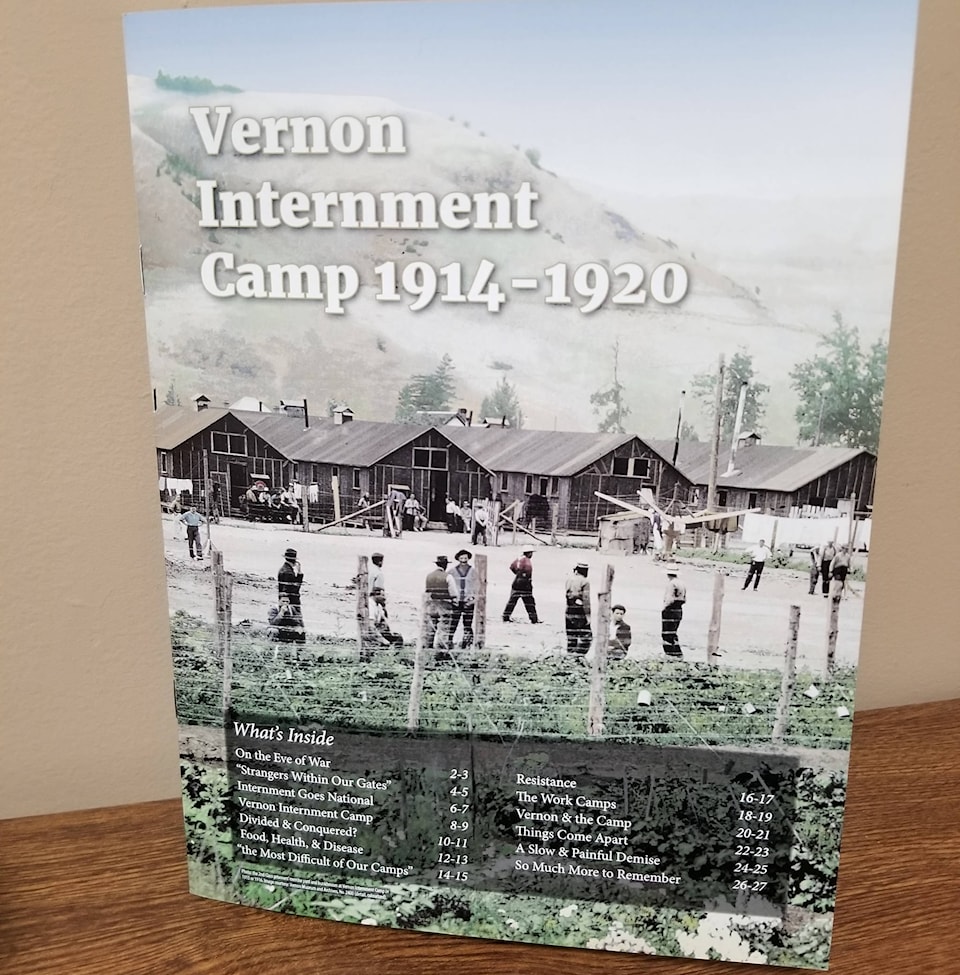Thanks to descendants and research, the Vernon and District Family History Society has provided a new glimpse of what life was like in a First World War internment camp in Vernon.
Don McNair, a society member, editor and layout man, helped produce a fascinating 28-page book, complete with amazing photographs sent by descendants of those imprisoned. It’s called Vernon Internment Camp 1914-1920.
“During the First World War, more than 1,000 men were imprisoned at an internment camp in Vernon’s north end (where W.L. Seaton Secondary sits today),” wrote McNair. “Most were forced to work on roads in B.C.’s Interior, but 200-300 stayed right in the camp in Vernon for years, plus about 80 of their wives and children.”
They were kept, said McNair, simply because of who they were: subjects of the German or Austro-Hungarian empires, with which Canada and the British Empire were at war.
The booklet is about not just the prisoners in the Vernon camp, but also about the soldiers who guarded them.
“In our research, we were concerned with the guards as well as the prisoners,” said McNair. “There’s a cast of about 2,000 people: 1,000 prisoners, 1,000 guards…We know more about the prisoners than about the guards but we hope that changes.”
Most of the men in the camps and retained in the camps were German, and McNair, 63, has some working with the German language which allowed him to discover some valuable information for the booklet.
One of the things that stands out for McNair in helping make the booklet was how delighted descendants were to understand what became of their ancestors. McNair, a military and history buff who has no connection to the camp, said a shining example in the book is the Schwarze family, Karl and his wife, Victoria, and their children, Gunter and Karla.
The Schwarzes emigrated to Canada in 1910 and Karl became a high school principal in Nanaimo.
“Andrea Schwarze, in Dresden, Germany, held on to his grandfather’s stuff,” said McNair, who made contact with Schwarze through the Internet. “His grandpa was in the camp and was deported. He had scraps of strange letters, strange photographs, not knowing their context or how they related to other international events.
“He puzzled over them without throwing them out.”
The photos in the booklet – there are pictures on every page – are spectacular.
They were provided by the national archives, Okanagan Military Museum and descendants who, McNair said, were more than happy to share their stuff.
McNair called the booklet project “exciting.”
“We thought we were encountering a story we really understood. In fact, we don’t understand it,” he said. “There is so much information to draw from, so many sources, I’m overwhelmed by how dramatic the story is without mayhem.
“We don’t have men being shot. We have one instance of a man being stabbed in the hand with a bayonette. The level of brutality seems to be less, even in the local work camps.”
The booklet touches on life in the camps, which includes pictures of games of soccer and hockey among prisoners, and introduces the public to some of the prisoners and guards.
McNair said there will be a follow-up booklet.
“Definitely,” he said. “If anybody has something they’d like to contribute, you can get a hold of me online at don@mcnairediting.com.”
The booklet is available at the Greater Vernon Museum and Archives. McNair will be talking about the booklet at the Greater Vernon Museum and Archives on Saturday, March 3.
